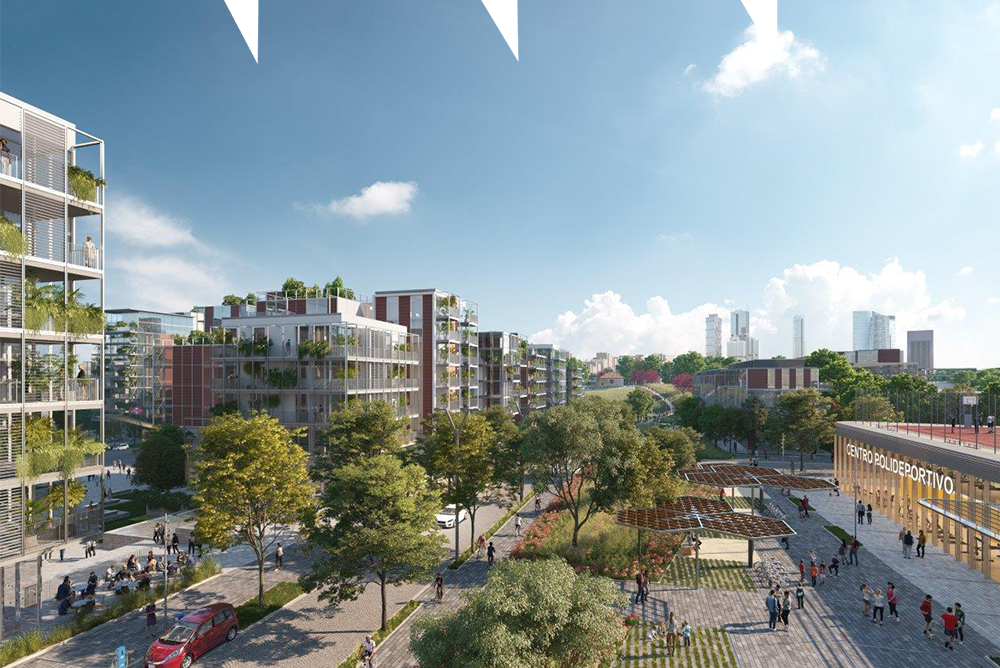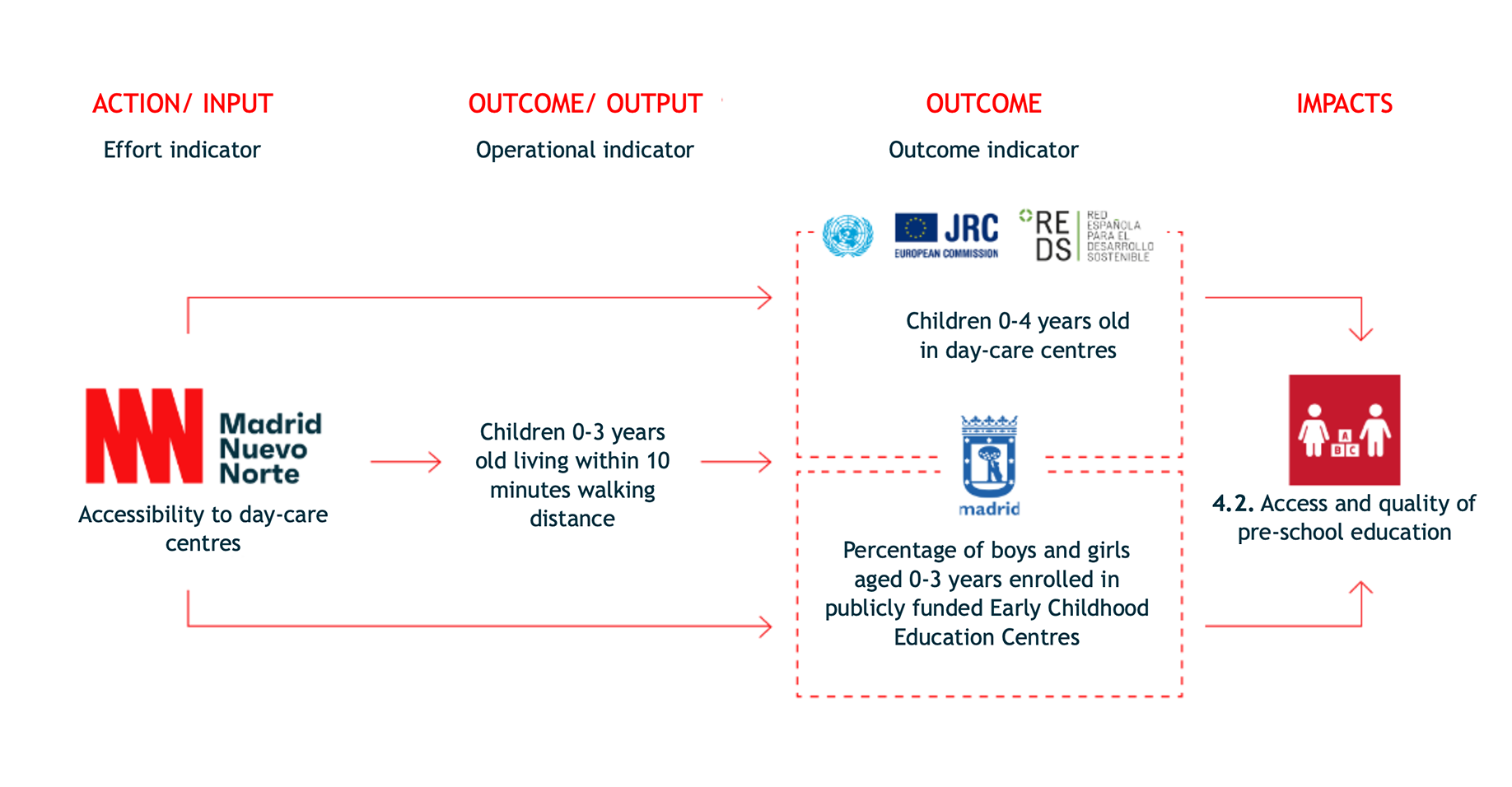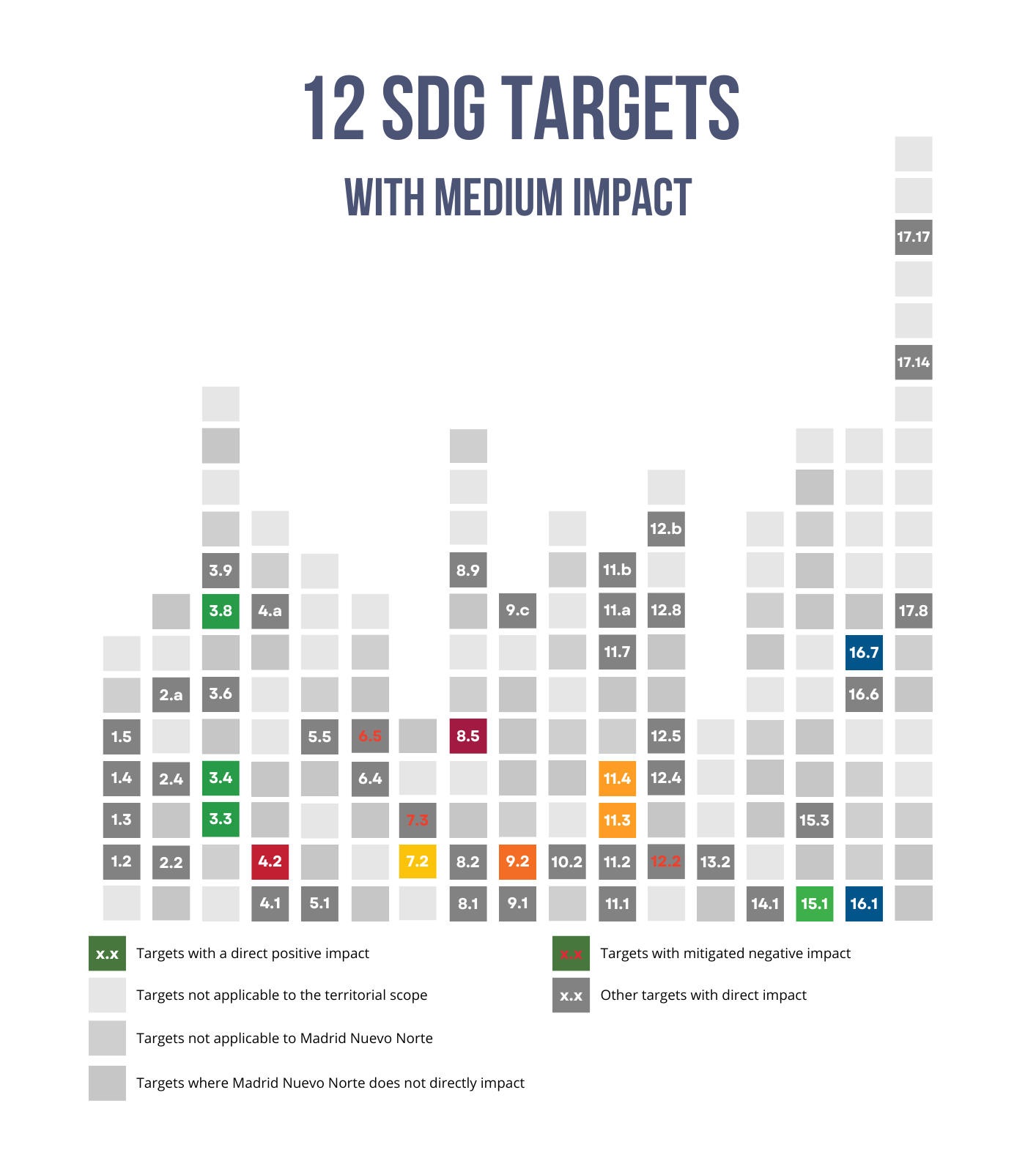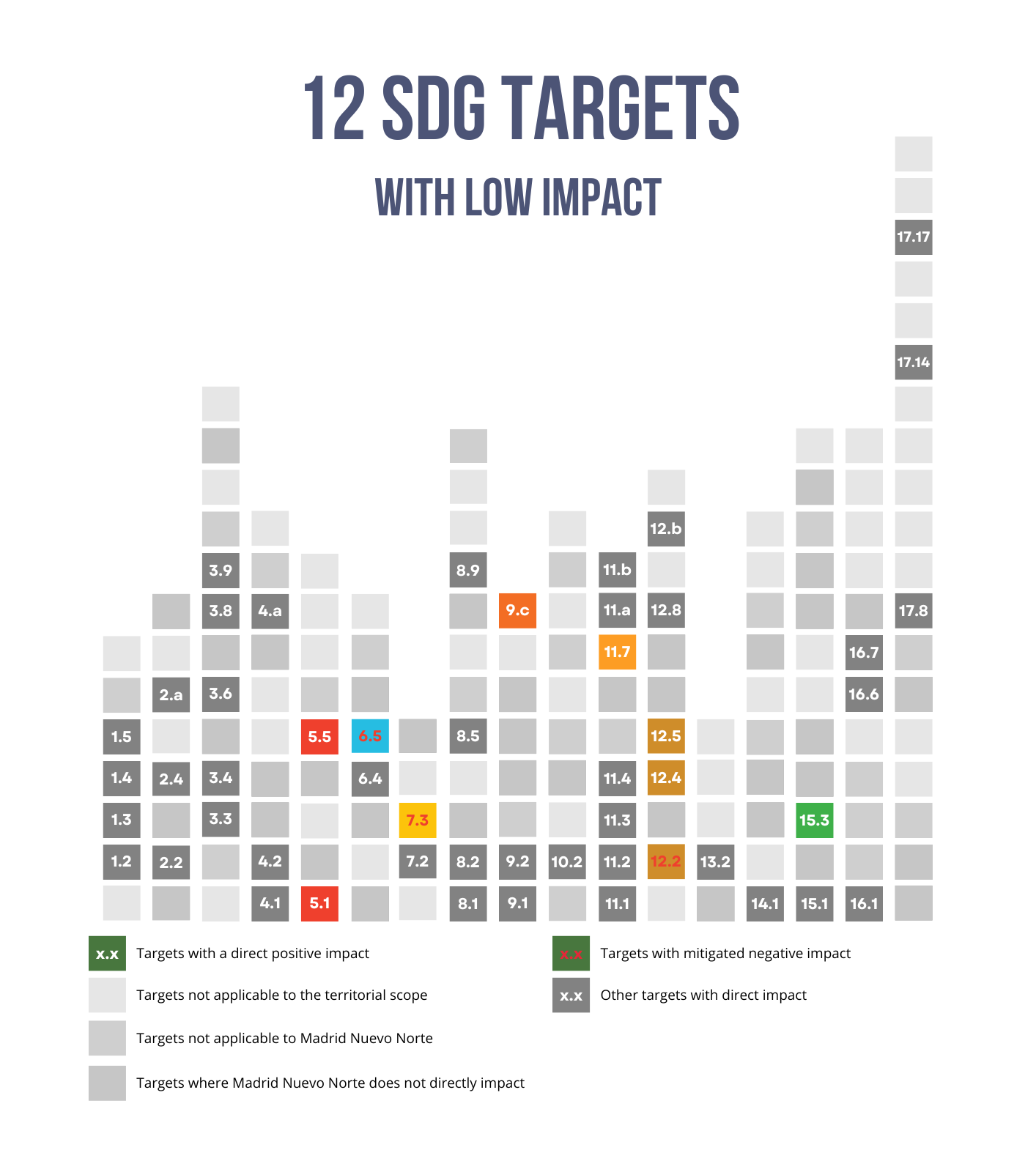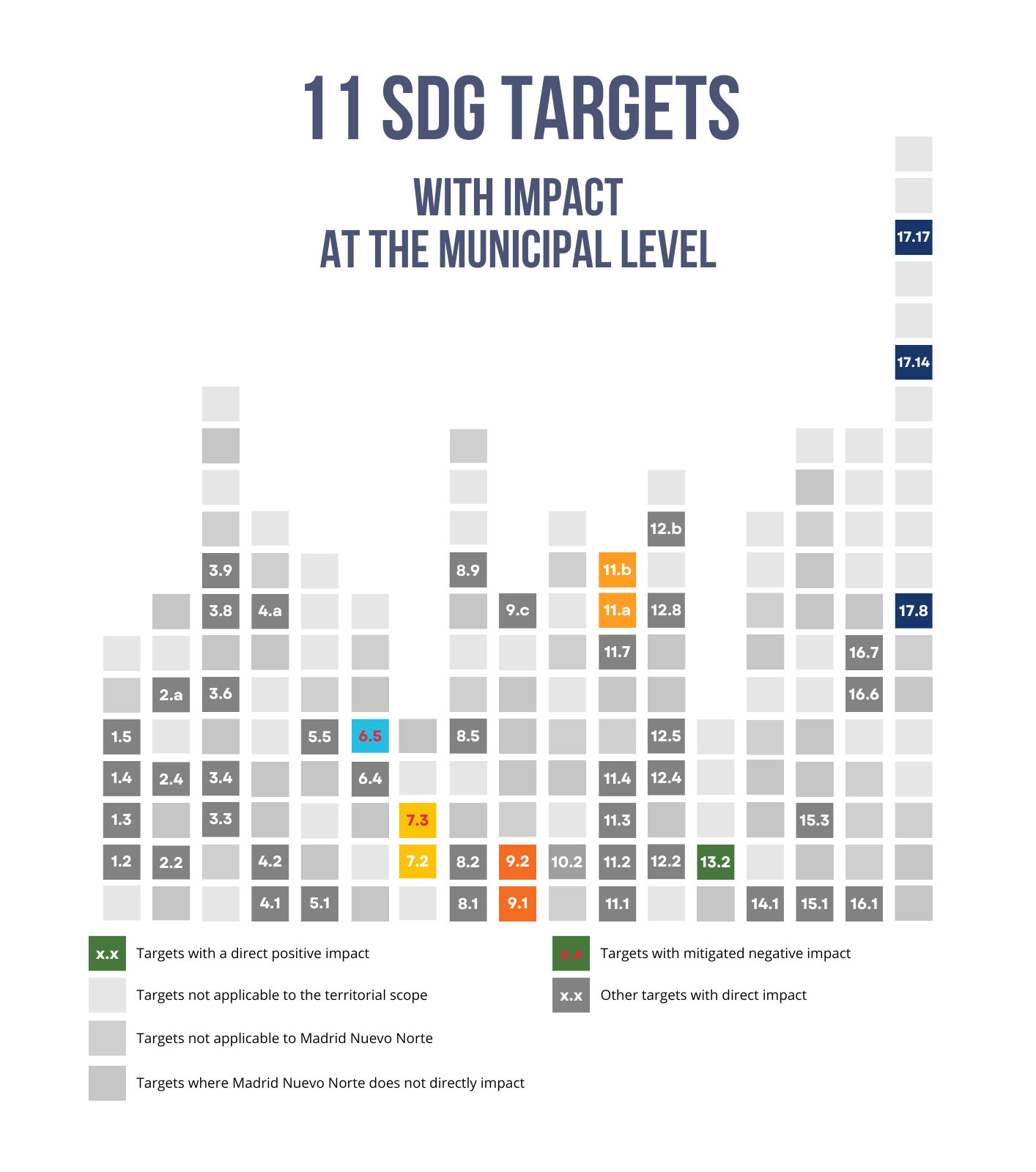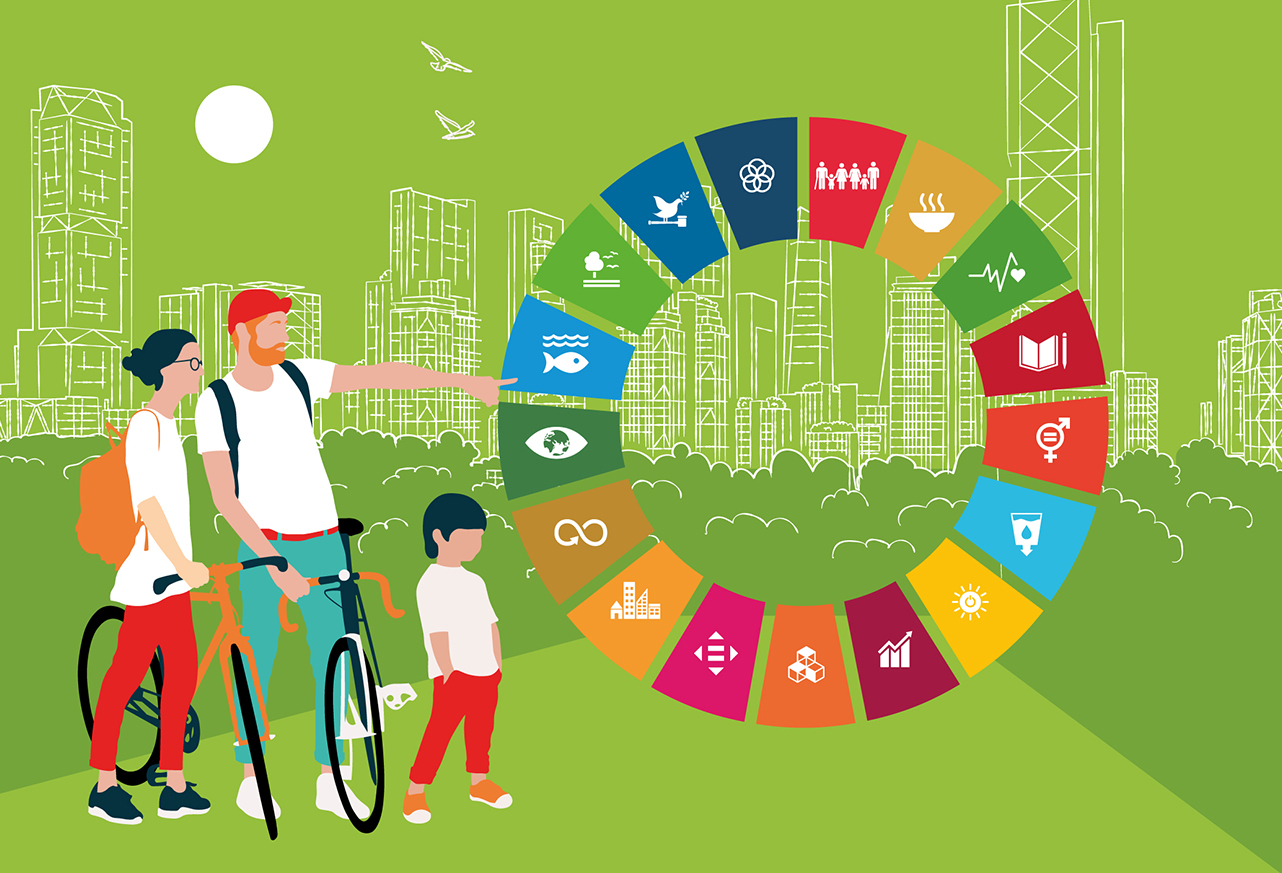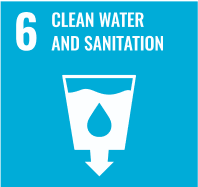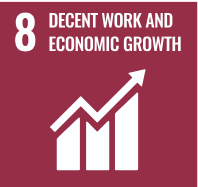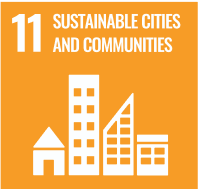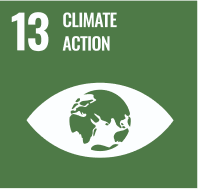After the targets to be used to measure the impact had been located and identified, a series of indicators were constructed to make it possible to comprehensively and systematically measure all of the SDGs located at the territorial level.
Urban indicators to measure the impact
The indicators that apply at the urban level and aimed at measuring impact are classified as:
- Effort indicators: These measure actions initiated by the project and are used to assess the status of their implementation, but they do not define the impact on their own (for example: "number of schools built" or "kilometres of cycle paths").
- Outcome indicators: These measure the achievement of the goal and are aimed at assessing the quality of life of citizens.
Reference sources at the European level and Madrid's own SDG strategy were used to identify these two types of indicators. A total of 315 outcome indicators and 73 effort indicators were obtained.
To correctly measure some SDG targets, it's possible to measure the implemented action more completely by introducing another type of indicator: the operational indicator.
Operational indicators
An operational indicator is an indicator that directly measures the outcome of an action that can be completely defined, and that in turn directly conditions the value of another indicator because it is impossible to measure this second value.
We used this concept, from the Global Urban Monitoring Framework, to measure SDG targets that have clear outcome indicators, but that cannot be determined at this point in the project.
This concept is taken from the Global Urban Monitoring Framework and includes several different types:
- Statistical indicators: These are calculated with data from public or open sources or data from the documents from Madrid Nuevo Norte that were analysed.
- GIS indicators (geographical): QGIS Software, which was considered be the most suitable because it is open and collaborative software, was used to develop these indicators. The geographical layers used to calculate these indicators were also taken from public and open sources and the Madrid Nuevo Norte documents themselves.
In cases where numerical data were not available or if quantitative calculation methods could not be applied, the decision was made to describe qualitative mechanisms of the effect of the actions of Madrid Nuevo Norte on its surroundings.
In this step a total of 43 operational indicators were identified and defined, directly transferring them or adapting methodologies from the reference sources. These were used to measure 22 of the 35 primary targets of Madrid Nuevo Norte. The other 21 indicators measure SDG targets that coincide with at least one of the reference frameworks (JRC or Madrid Strategy).
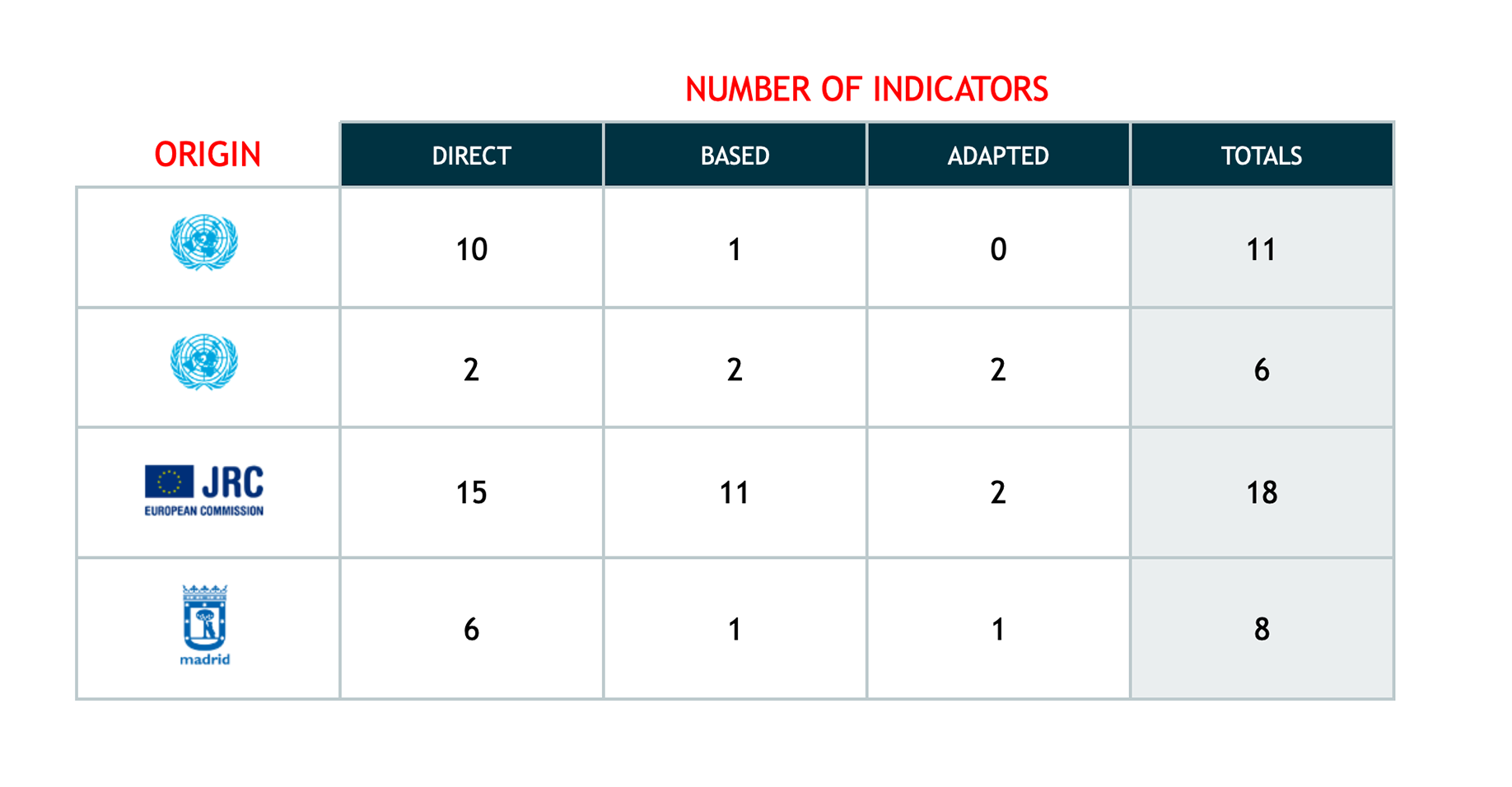
These European-level reference sources were used to identify these two types of indicators:
Reference Sources
-
 Global Indicator Framework for Sustainable Development Goals and targets of the 2030 Agenda for Sustainable Development
United Nations
Global Indicator Framework for Sustainable Development Goals and targets of the 2030 Agenda for Sustainable Development
United Nations
-
 Global Urban Monitoring Framework
United Nations
Global Urban Monitoring Framework
United Nations
-
 European Handbook for SDG Voluntary Local Reviews
Joint Research Centre of the European Commission
European Handbook for SDG Voluntary Local Reviews
Joint Research Centre of the European Commission
-
 Strategy for locating the Sustainable Development Goals of the 2030 Agenda in the City of Madrid
Madrid City Council
Strategy for locating the Sustainable Development Goals of the 2030 Agenda in the City of Madrid
Madrid City Council


